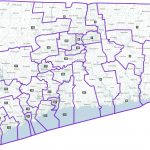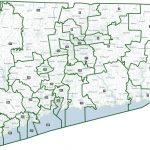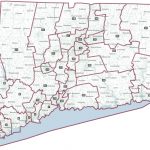Final CT State Senate district proposals:
(created using Maptitude for Redistricting)
Week 12: Small group interviews with Connecticut legislators!
Major thanks to:
– Brendan Sharkey, former CT Speaker of the House
– Themis Klarides, Minority Leader, CT House
– Chris Donovan, former CT Speaker of the House
– Larry Cafero, former Minority Leader, CT House
– Jason Rojas, CT House of Representatives
Week 11: Busy at work in the Redistricting Lab!
Week 10: Where do legislators do their work? Field trip to the Legislative Office Building and the State Capitol! (Trinity blog post)
Week 9: What is the seats/votes curve and how is it constructed? (Slides)
How can fair division algorithms be applied to a district map? (Slides)
Week 8: What are Monte Carlo methods and Markov Chains and how are these methods used to analyze district maps? (Slides)
Week 7: How is the Census administered, how is Census data organized, and how can we display Census data to tell a story?
Week 6: How have government policies contributed to residential racial segregation and how/where people live? (Student Slides)
What is the history of housing inequality in metropolitan Hartford?
(Jack Dougherty Slides)
Week 5: What is the history of redistricting practices in Connecticut?
How are Congressional representatives (re)apportioned amongst states? (Slides)
Week 4: How do we test for racially polarized voting? (Slides)
What current and recent court cases involve racial or partisan gerrymandering? (Student Slides)
What is prison gerrymandering? (Slides)
Week 3: How do we measure compactness? (Slides)
What is the legal history of racial gerrymandering? (Slides)
Week 2: What is the Efficiency Gap? (Slides)
What are independent redistricting commissions? (Slides)
Week 1: What is Redistricting / Gerrymandering? (Slides)






